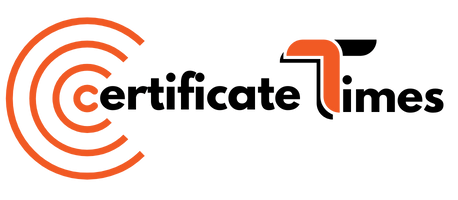HubSpot Client Management Exam
Study Guides and Answers
Do you want to certify on the HubSpot Client Management Certification exam but you are not getting proper time for exam preparation? Become HubSpot Client Management Certified in just a few hours! You will get exam guidelines, tips, and all correct question answers.
Benefits
- 100% Exam Pass Guarantee with Satisfaction.
- All questions & Answers in PDF files, easy to search during the exam.
- All questions are collected and updated every little time.
- Pass the exam on the first try.
- Save a lot of time.
During exam time, You don’t need to waste the time searching answers one by one, answers that you might not find or probably incorrect. Are you looking for a PDF file that contains all your correct answers in one file then collect our HubSpot Client Management Certification exam answer sheet (PDF Format – English).
HubSpot Client Management Exam Answers – NEW – Updated
 Check out following HubSpot Client Management Assessment Answers:
Check out following HubSpot Client Management Assessment Answers:
- onboarding
- post-onboarding and continuing client management
- renewal
- ongoing management
- ending retainer
- True – you should always provide all information in the very beginning to help ease any anxiety your client has about the relationship.
- True – by providing all the information in the first meeting, you’ll reduce the need to meet again during the onboarding phase, saving both you and your client time.
- False – instead of giving all information in one meeting, spread it out during the first few weeks. This will help keep your clients from getting overwhelmed.
- False – avoid giving any extra information to your client unless they specifically ask. This will prevent any unnecessary confusion.
- onboarding
- post-onboarding and continuing client management
- renewal
- ongoing management
- ending retainer
Why is documenting your client lifecycle process important?
- It helps you review what is and isn’t working in your client journey
- It makes employee onboarding and communicating to clients easier
- It makes the client lifecycle process more streamlined
- All of the above
Which of the following is NOT a step to optimizing your onboarding process?
- Collect information about your current onboarding process
- Review and workshop the onboarding process
- Update your existing onboarding process
- Send your updated onboarding process to all your clients
- True
- False
What are some of the ways to use automation in your onboarding process?
- Use the HubSpot meeting tool to make it easier to schedule client calls
- Create email templates in HubSpot Sales for your account manager to use with their clients
- Create email sequences to automate communication to your clients
- All of the above
- True – set a meeting with all your past clients to learn what you could have improved on.
- True – have an internal meeting for each client moving forward to determine how you can improve the process.
- False – only debrief your best clients, since this would be too laborious to do for every client.
- False – only debrief clients who cancel their engagement with you, since these are clients you can learn from.
- True
- False
Fill in the blank: A ____________ is a great way to perform health checks with your clients.
- Net Promoter Score survey
- service level agreement
- business one-page questionnaire
- renewal call
- True
- False
True or false? It’s important to adopt soft skills to align with your client on a personal level.
- True – finding areas of commonality will help you establish trust early on and open the conversation with your client.
- True – the most important thing is to make sure your client sees you as a friend. If your client likes you, they’re less likely to fire you.
- False – a client is paying you to provide a service, not be their friend. As long as you get the work done, you don’t need to worry about building a relationship.
- False – avoid talking to your client about anything besides work, since this ends up wasting valuable time.
All of the following are best practices for ongoing client management, EXCEPT:
- Schedule calls and create call agendas
- Avoid making your client interactions touchless where possible
- Be a brand advocate for your client
- Help negotiate for your client’s needs
- health checks
- renewal calls
- goal setting
- alerts
What are some negative signals to look out for from your client?
- A drop in tool usage
- Skipping your check-in meetings
- A bad attitude
- All of the above
- Red – the client is most likely going to cancel. Prepare your cancellation call with the marketing manager, notify HubSpot, and pass their contact details on to your HubSpot account manager.
- Orange – there’s potential for the client to renew or cancel. Even though you’ve seen an improvement in performance, you need to come up with a plan to improve results even more.
- Green – you’re confident the client will definitely upgrade or renew. While the client has expressed some concerns, you’ve still improved their performance.
- None of the above – you don’t have enough information at this point to grade the client’s health.
All of the following are best practices for growing your existing client relationships, EXCEPT:
- Keep track of events that are important to your client
- Understand your client’s goals and perform ongoing reporting
- Regularly review the client’s account with your internal team and client
- Adopt a quick wins approach by performing out-of-scope requests
True or false? Upsells should only happen during the renewal call.
- True – you shouldn’t bring up any upsell opportunities until the renewal, since this will just distract your client.
- True – upsells only happen during a renewal, since a client is never willing to pay more for something once they already have a retainer.
- False – upsells can happen at any time, you should always be looking for opportunities to add more value for the client.
- False – upsells should only happen during monthly or quarterly client reviews. You don’t want to distract from the renewal by presenting new ideas.
- True
- False
- A client with only 20-50 employees
- A client who represents the type of account your agency wants to work with
- A client with specific business goals
- A client who is financially stable


